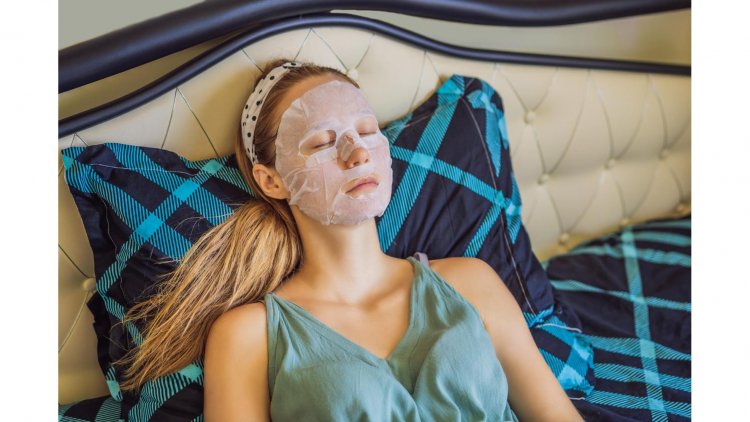Travel Skin Saviors: Revitalize Your Skin After Long Flights and Jet Lag
Long flights, especially those crossing multiple time zones, can leave your skin feeling tired, dehydrated, and dull. The dry air, cramped spaces, and change in climate take a toll on your complexion, leading to a series of skin concerns like puffiness, breakouts, and even signs of premature aging. Jet lag, on top of it, adds to the stress, affecting both your body and skin in complex ways. But fear not—there are proven methods and products to help you rejuvenate your skin and regain that fresh, glowing complexion. Let’s explore how you can restore your skin to its best after long-haul flights and deal with jet lag like a pro!

The Impact of Air Travel on Your Skin
Before diving into solutions, it's important to understand how air travel affects your skin. The cabin air in airplanes is notoriously dry—often with humidity levels dipping to as low as 10-20%. This lack of moisture can quickly dehydrate your skin, leading to tightness, dryness, and irritation. Moreover, the low humidity increases the evaporation rate of your skin's natural moisture, leaving it vulnerable to environmental stressors.
Long flights can also disrupt your skin’s natural circadian rhythms. Just like your body’s internal clock, your skin follows a similar 24-hour cycle. The disrupted sleep patterns caused by jet lag can lead to dullness, uneven skin tone, and even increase the likelihood of breakouts.
The combination of dry air, stress, and fatigue can also lead to puffiness and dark circles around the eyes. The body’s inability to effectively flush out toxins during air travel may leave your skin looking tired and lackluster. Fortunately, there are ways to counteract all of these negative effects and restore your skin’s natural vibrancy after your flight.
Hydrate, Hydrate, Hydrate
The number one rule to rejuvenating your skin after a long flight is to rehydrate. Replenishing the moisture that your skin loses during air travel is essential in combating dryness and restoring its healthy appearance. But it’s not just about drinking water—hydration goes beyond just internal replenishment.
Drink Water Throughout the Flight
Aim to drink at least 8 ounces of water for every hour you're in the air. This can help combat dehydration from the dry cabin air. While it may be tempting to grab sugary or caffeinated drinks, these only add to dehydration and may leave your skin feeling even drier. Instead, focus on sipping water and avoiding excessive alcohol or coffee, which can dehydrate your skin.
Use a Hydrating Mist
A facial mist can be a lifesaver during a long flight. Look for a hydrating spray that contains ingredients like rose water, aloe vera, or hyaluronic acid. These ingredients help soothe and hydrate the skin without adding heavy oils or creams that could clog pores in a confined space. Spraying your face every few hours will provide instant relief and help lock in moisture, ensuring your skin remains supple and refreshed.
Invest in a Good Moisturizer
On top of drinking water and using a mist, applying a rich moisturizer before and during the flight can create a barrier to help retain moisture. Opt for a moisturizer that contains hyaluronic acid, glycerin, or ceramides, as these ingredients are known for their moisture-locking properties. Apply a thick layer of your favorite moisturizer before you board, and reapply as needed during the flight, especially if you start to feel your skin tightening.
Replenish Your Skin's Essential Oils and Antioxidants
Long flights and jet lag can deplete the skin’s natural oils, leaving it feeling dry and stripped. After you arrive at your destination, focus on replenishing these essential oils with products that are rich in nourishing ingredients. Look for serums or oils that contain antioxidants, which help protect your skin from the damaging effects of pollution and environmental stressors.
Antioxidant-Infused Serums
Serums containing vitamin C, E, or ferulic acid can help brighten the skin, reduce inflammation, and combat free radicals caused by stress and environmental damage. Vitamin C, in particular, is known for its ability to brighten the complexion and boost collagen production, helping to reduce the signs of aging caused by dehydration.
Use Face Oils for Nourishment
Face oils can help lock in moisture and add an extra layer of hydration. Oils like argan, jojoba, or rosehip are excellent choices because they are rich in fatty acids and vitamins that help replenish and nourish the skin. If you have sensitive skin or are prone to breakouts, opt for lightweight oils that won't clog your pores but will still give your skin the nourishment it needs after a long flight.
Take Care of Your Eyes
Jet lag is infamous for leaving its mark around the eyes. Dark circles and puffiness often accompany the exhaustion and dehydration from long-haul flights. Thankfully, there are ways to minimize these concerns.
Cold Compresses or Eye Masks
To combat puffiness, you can use a cold compress or an eye mask. You can even use chilled spoons or a towel soaked in cold water and apply them to your eyes for a few minutes. The cold helps reduce swelling and constricts the blood vessels around the eyes, which can also help with dark circles.
Eye Creams with Caffeine
Eye creams containing caffeine are a great option for reducing puffiness and minimizing the appearance of dark circles. Caffeine helps to constrict blood vessels, which can reduce swelling and prevent the build-up of fluids under the eyes. Look for eye creams that also contain peptides, which help boost circulation and strengthen the delicate skin around the eyes.
Hydrating Under-Eye Patches
For an extra boost of hydration and rejuvenation, under-eye patches are a quick and easy option. These patches are often packed with hydrating ingredients like hyaluronic acid, collagen, and vitamin C. Applying them for 15-20 minutes can help restore moisture and reduce the appearance of fatigue around the eyes.
Detox and Exfoliate
After the stress of flying and jet lag, your skin may feel congested or sluggish. Using gentle exfoliators or detoxifying masks can help remove dead skin cells and revive your complexion.
Exfoliate Gently
After a long flight, your skin might be too sensitive to handle a harsh scrub. Instead, opt for a gentle chemical exfoliant that contains AHA (alpha hydroxy acid) or BHA (beta hydroxy acid). These ingredients help remove dead skin cells, clear pores, and leave your skin looking smoother and more radiant. However, don't overdo it—exfoliate once or twice a week at most to avoid irritation.
Use a Detox Mask
A detoxifying clay mask can help absorb impurities and excess oils, leaving your skin feeling refreshed and purified. Bentonite or kaolin clay masks are popular choices for drawing out toxins from the skin and restoring balance. Make sure to follow up with a hydrating moisturizer after using a clay mask, as it can sometimes leave the skin feeling drier than usual.
Protect Your Skin with SPF
Finally, even if you’re recovering from jet lag and not necessarily spending much time outdoors, never skip sunscreen. Your skin is still vulnerable to UV rays, which can contribute to premature aging and damage. Whether you’re on the plane or exploring a new city, applying SPF daily is essential for keeping your skin protected.
Look for a broad-spectrum sunscreen with an SPF of at least 30. Mineral sunscreens with zinc oxide or titanium dioxide are great options, as they provide physical protection against the sun’s harmful rays. Don’t forget to reapply every 2-3 hours if you’re spending extended time outdoors.
Rest and Recovery for Your Skin
After your flight, your skin will need some time to recover, just like your body. Try to get adequate sleep, as it plays a crucial role in your skin's recovery process. Sleep boosts your skin’s ability to repair and regenerate itself. If you’ve just arrived at a new destination, resist the urge to stay up all night—prioritize rest to give your skin the best chance to bounce back.
Taking the time to pamper your skin post-flight is essential to reversing the effects of jet lag and dehydration. From hydrating to nourishing and protecting your skin, these steps can ensure you look and feel refreshed no matter how long the flight.
Important Tips to Keep in Mind
- Avoid Heavy Makeup: Heavy makeup can further dehydrate your skin, so give your skin a break by opting for minimal makeup or no makeup at all.
- Use a Humidifier: If you are staying in a dry environment, a humidifier can help restore moisture to the air, benefiting both your skin and your overall well-being.
- Maintain a Healthy Diet: Eating a diet rich in antioxidants, healthy fats, and hydration will also help your skin recover faster. Drink plenty of water and incorporate fruits and vegetables high in vitamins C and E.
Post-Flight Skin Revival Routine
After stepping off the plane, your skin might be feeling tired, tight, and in desperate need of some TLC. A good post-flight skincare routine can work wonders in restoring balance and hydration. Below are some steps you can take to ensure your skin looks fresh and glowing in no time.
Cleanse Gently
While it’s tempting to reach for your strongest facial cleanser to get rid of the buildup that may have accumulated during the flight, your skin might be too sensitive after the long journey. Instead, use a gentle, hydrating cleanser that doesn’t strip away natural oils. Look for cleansers that contain soothing ingredients like chamomile, aloe vera, or glycerin. A gentle cream or oil-based cleanser will help remove any dirt, makeup, and residue from the flight without further drying or irritating your skin.
Apply a Hydrating Toner
Toners are often overlooked, but they are an essential step in restoring hydration to the skin. After cleansing, apply a hydrating toner that can replenish moisture and help balance your skin's pH levels. Ingredients like rose water, witch hazel, or glycerin can help to hydrate the skin and prep it for the next steps in your skincare routine. This also helps your skin absorb serums and moisturizers better.
Use a Nourishing Serum
Serums are packed with potent ingredients that can target specific skin concerns, such as redness, dryness, or fine lines. Post-flight, look for a serum with hydrating and anti-aging properties. Vitamin C serums are excellent for brightening the skin and improving its texture, while hyaluronic acid can provide intense hydration. If your skin feels particularly stressed or irritated, opt for a calming serum with ingredients like niacinamide or calendula to soothe inflammation.
Moisturize with a Rich Cream
Moisturizing after a flight is non-negotiable. To lock in all the hydration from previous steps, use a thick, nourishing moisturizer. This is especially important if you have dry or sensitive skin. Look for a moisturizer that contains ceramides, which help to restore the skin’s natural barrier, as well as peptides to strengthen the skin and encourage its repair. If you're in a cold or dry climate after your flight, you may want to layer an oil on top of your moisturizer for added protection against the elements.
Add a Face Mask for Extra Rejuvenation
Face masks can be an excellent way to give your skin an extra boost after a flight. Depending on your skin’s needs, you can choose from hydrating, soothing, or detoxifying masks. Sheet masks with hydrating ingredients like hyaluronic acid or aloe vera are great for restoring moisture, while clay masks can help purify your skin if you’ve been exposed to environmental stressors during your travels. Be sure to choose a mask that addresses your specific skin concerns and apply it for 10-15 minutes to allow your skin to fully absorb the treatment.
Jet Lag and Skin: How to Manage Exhaustion and Puffiness
Jet lag doesn’t only affect your sleep patterns; it has visible effects on your skin as well. The combination of travel fatigue, disrupted sleep, and dehydration often leaves your skin looking dull, swollen, and lackluster. To help your skin bounce back, here are some strategies to manage jet lag and its effect on your complexion.
Get Some Fresh Air
While it may be tempting to rest inside and avoid any exertion after a long flight, getting outside for a short walk can help you adjust to your new time zone and promote circulation. This increase in blood flow can help alleviate puffiness and improve your complexion. Fresh air also helps oxygenate your skin, giving it a natural, healthy glow.
Do Gentle Facial Massage
A simple facial massage can do wonders in reducing puffiness and stimulating circulation. Using your favorite facial oil or a nourishing cream, gently massage your face in upward, circular motions to promote lymphatic drainage. This can help reduce swelling, especially around the eyes and jawline. If you have a jade roller or gua sha tool, these are great options for massaging your face while encouraging fluid drainage.
Take Short Naps, But Don’t Overdo It
While your body may feel like it needs a full day of rest after a long flight, try to avoid napping for too long. Sleeping during the day can disrupt your ability to adjust to the new time zone. Short naps of 20-30 minutes are enough to recharge your energy and make your skin look less tired. This way, you’re giving your body the rest it needs without interfering with your ability to get quality sleep at night.
Adjust Your Sleep Routine
Your body’s circadian rhythm is incredibly important for maintaining healthy skin. Jet lag can throw off your natural sleep cycle, but you can help reset it by gradually adjusting your sleep schedule to match the local time. Try to sleep at the local bedtime, avoid excessive exposure to screens before bed, and create a relaxing environment to ensure you get restful, rejuvenating sleep.
The Role of Diet in Skin Recovery Post-Flight
Diet plays a crucial role in how quickly your skin recovers from the stress of travel. Foods rich in antioxidants, vitamins, and healthy fats can significantly enhance your skin’s ability to heal after a long flight.
Eat Antioxidant-Rich Foods
Antioxidants help protect your skin from oxidative stress and free radical damage, which is heightened by factors like travel, pollution, and jet lag. Incorporate foods rich in vitamins C and E, such as berries, citrus fruits, leafy greens, and nuts. These nutrients support collagen production and brighten your skin, giving it a rejuvenated and youthful appearance.
Focus on Omega-3 Fatty Acids
Healthy fats found in foods like avocados, olive oil, and fatty fish (like salmon and mackerel) are essential for maintaining skin hydration and reducing inflammation. Omega-3 fatty acids are particularly important in maintaining the skin’s natural moisture barrier, helping to prevent dryness and irritation.
Stay Hydrated with Herbal Teas
While plain water is essential for hydration, herbal teas can also be a great way to stay hydrated while offering additional skin benefits. Teas such as chamomile, peppermint, or green tea are packed with antioxidants and anti-inflammatory properties. These can help soothe the skin and reduce any irritation or redness caused by dehydration.
The Final Touch: Maintaining Skin Health for the Long Term
After your flight and jet lag recovery, it’s important to continue maintaining your skin’s health as you adjust to your new environment. Here are a few additional tips to keep your skin in top shape during your travels:
Keep Your Skincare Routine Consistent
Consistency is key when it comes to skincare. Stick to a simple, effective skincare routine that includes cleansing, moisturizing, and SPF protection. If you’re traveling to different climates or experiencing temperature changes, consider adjusting your products accordingly. For example, you may need a heavier moisturizer in colder climates or a lighter, oil-free moisturizer in hot, humid locations.
Protect Your Skin from Pollution
Many major cities are known for their pollution, which can accelerate skin aging and cause irritation. To protect your skin, use products with antioxidants and anti-pollution ingredients, such as vitamin C, green tea, or niacinamide. This will help shield your skin from the environmental pollutants and keep it looking youthful and fresh.
Don’t Forget Your Hands and Lips
Your face may get the most attention, but don’t neglect the skin on your hands and lips. Both are particularly prone to drying out during travel. Keep a nourishing hand cream and lip balm on hand to ensure that your skin remains soft and hydrated.
To Wrap It Up: Skin Revival After Travel
Travel may take a toll on your skin, but with the right routine, you can restore its vibrancy and health. Focus on hydration, nourishment, and protection to revive your complexion. Gentle cleansing, moisturizing, antioxidant serums, and SPF will keep your skin glowing, while consistent sleep and a healthy diet will help restore balance from the inside out.
By following these travel skin saviors, you’ll not only look fresh and radiant but feel confident in your skin, no matter the destination.
Disclaimer
The content shared on this blog is intended for informational purposes only. Consulting a professional about the highlighted information is recommended. The blog and its authors are not liable for any adverse effects or consequences resulting from the use of the methods or products provided. Always prioritize your health and safety.
What's Your Reaction?





















